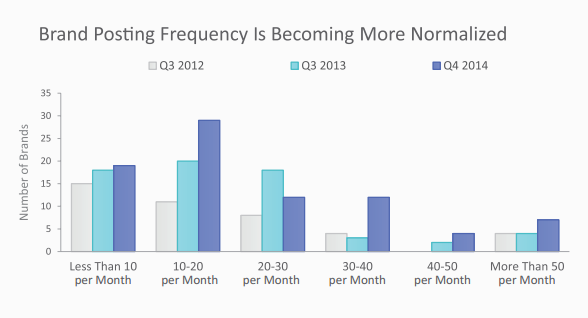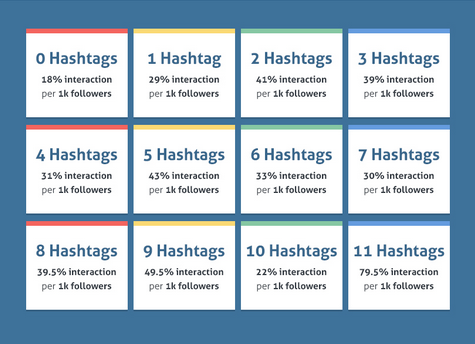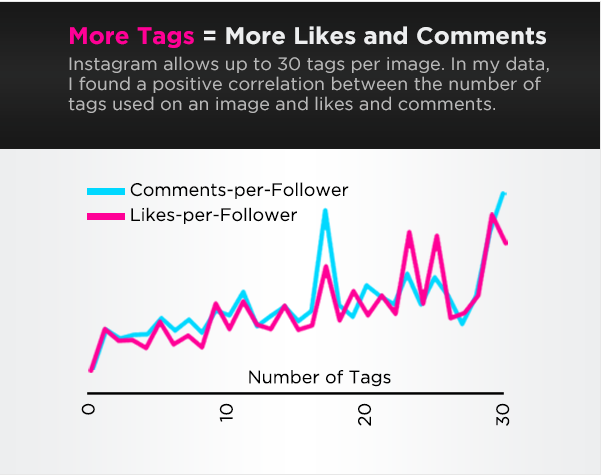Instagram has provided brands with the opportunity to engage with their audience and tell their story through the power of visuals. In addition to the network’s growth, users are also highly engaged with the platform. Each day, half of all users are online the app and spend an average of 21 minutes on the app. Top brands have quickly realized the potential Instagram presents. You’re considering joining, or need tips and best practices to get more out of the app? We’ve had here examples of 8 of the most common mistakes brands make on Instagram backed by the ones that are creating a memorable presence.
Mistake #1: They Lack a Goal-Driven Strategy
Instagram gives brands a means of telling their story through photographs and video clips. The network is ideal for showcasing products being used in real-life situations. It’s also used for showing the progress of something through photos over time (such as the construction of a vehicle, the making of a new record). And even answering frequently asked questions through short video clips. Possibilities are near limitless on Instagram. However, like any other form of digital marketing, you’ll want to define goals early on and create a strategy to help you reach them.
You’re on Instagram to improve brand awareness, show a new product line, or add a human element to your brand? Eeach piece of content you publish on the platform should be adding value and help you attain goals.
Who’s doing it right? Quest Nutrition
Quest Nutrition is a company about nutrition popular amongst the low carb and fitness crowds. They create nutritional food and drink products to help people reach their own health and fitness goals. According to TOTEMS Analytics, Quest Nutrition grows in follower count by roughly 15k / month. There’s no questioning how well of a job they do connecting with their audience and their lifestyles.
Furthermore, they’re making it work in a somewhat surprising fashion, through video. Instagram introduced a 15-second video component to their platform back in June of 2013. And the adoption and engagement rates have been lesser than photo content. However, Quest Nutrition has found a way to make it work, driving far more engagement with video content, according to PicStats.
Here’s an example of Quest Nutrition creating a “how-to” video with one of their products, all while sticking to their #CheatClean (health and wellness) message and strategy.
Mistake #2: They Aren’t Focused on Quality
Just as important as having a goal-driven strategy, your content’s quality may very well mean the difference between a successful Instagram presence and one that’s easily forgotten.
Spend a second thinking about how Instagram works. Users typically scroll through a single column of photos, quickly glancing at photos and skimming captions, only slowing down and stopping when something catches their eyes or piques their interest. Other times they’re exploring content via hashtags, scrolling through a 3-column search layout until a photo or video stands out. The more focus you put on the quality of the content you’re publishing on Instagram, the more likely users will be to slow down, stop at, and engage with your account and content.
Compared to other social network platforms, posts on Instagram tend to have a higher shelf-life. This means continued engagement days, and sometimes weeks, after your original post. In their Instagram study, Simply Measured found that a number of posts by top brands take more than 19 hours to hit 50% of their total comments, and another 10% of comments coming after 19 days.
Who’s doing it right? Taco Bell
Taco Bell is a fast-food chain based in Irvine, California and is no stranger to effectively utilizing social media. According to TOTEMS Analytics, Taco Bell grows in follower count on Instagram by roughly 6k /month. And while you might not typically group fast food and photography, Taco Bell makes it work and is taking full advantage of the highly-engaged user base Instagram has to offer.
The fast-food chain does an extraordinary job leveraging vibrant colors in their photos and creates a laidback, entertaining feel through photo and video captions. Although they only post an average 0.68 times-per-day, when they do post, it’s eye-catching, relevant, and engaging. This approach has worked for Taco Bell as they’ve built a dominant presence on Instagram, boasting 488k followers, 19k likes-per-post, and 581 comments-per-post, according to PicStats.
Below are a couple of examples of Taco Bell’s energetic Instagram posts that have turned them into a must-follow on the social network.
Mistake #3: They Don’t Post Enough
According to a study by Union Metrics, brands tend to post on Instagram an average of 1.5 times-per-day. In the same study, certain brands posted once an hour throughout the day and saw above-average engagement rates on almost all of their content. In addition, Simply Measured found that brand posting frequency is becoming more normalized as illustrated below.
As part of your Instagram strategy, you should follow post frequency closely. Look for a happy medium between quantity and quality, ensuring one isn’t sacrificed for the other. If you determine that you’re able to post quality content 15 times-per-day, it’s important you stick to a similar posting schedule thereafter. The reason being that in the Union Metrics study. Some brands got a loss in followers due to a lack of consistent posting.
Who’s doing it right? MAC Cosmetics
MAC Cosmetics is a cosmetics manufacturer founded in 1984 in Toronto, Canada. According to TOTEMS Analytics, The number of MAC Cosmetics’ follower count on Instagram increases by roughly 231k / month. A post on Instagram gets the cosmetics manufacturer an impressive 34k likes and 300+ comments on average according to PicStats.
MAC Cosmetics is close to hitting 3 million followers and that’s due in part to their frequent and consistent posting schedule. It’s uncommon to go a day without seeing several quality posts from the brand. On average, they post to Instagram 4.54 times-per-day. It’s worth noting that they’re not sacrificing quality or showing signs of laziness in keeping up with this frequency. On March 5th, 2015 alone they posted 8 photos and earned an average of 33k likes.
Again, it’s worth noting that the brand isn’t sacrificing quality, as you’ll see in the examples below.
Mistake #4: They Misuse Hashtags
It is entirely possible to misuse hashtags on Instagram, whether you’re using too few, irrelevant ones, or none at all.
Similar to other social networks, hashtags play an important role in the discovery process on Instagram. Lesser-known brands or brands with low follower counts can utilize popular but relevant hashtags. It can help to build momentum and increase their content’s exposure.
In addition to discovery, hashtags can help build brand awareness. Consider creating and promoting branded hashtags as a part of a more in-depth strategy.
When it comes to an optimal number of hashtags per post, a QuickSprout infographic points out that posts with 11 or more hashtags received nearly 80% interaction, compared to just 22% when using 10 and 41% when using two (Instagram limits the number of hashtags allowed per post to 30).
Furthermore, AgoraPulse found a direct, positive relationship between hashtags and engagement, likes, and comments.
In terms of relevancy, don’t misuse hashtags in an attempt to increase exposure. This is a surefire way to lose credibility and come off as lazy on a network that was built on authenticity and quality.
Who’s doing it right? GoPro
GoPro is the creator of the “world’s most versatile camera,” a favorite amongst extreme athletes, amateur photographers, and pets around the world. According to TOTEM Analytics, GoPro grows in follower count on Instagram by roughly 221k / month and is one of the most popular brands on the network.
With 4.3m followers, GoPro could probably eliminate hashtags completely without sacrificing engagement. The brand chooses to leverage the discovery mechanism. It’s just one of the reasons they’ve created such a memorable Instagram presence.
Below is a GoPro post that gets a couple things right in the hashtag category. For starters, they’re utilizing more than one hashtag. More importantly, they’re utilizing hashtags that are relevant to the photo.






